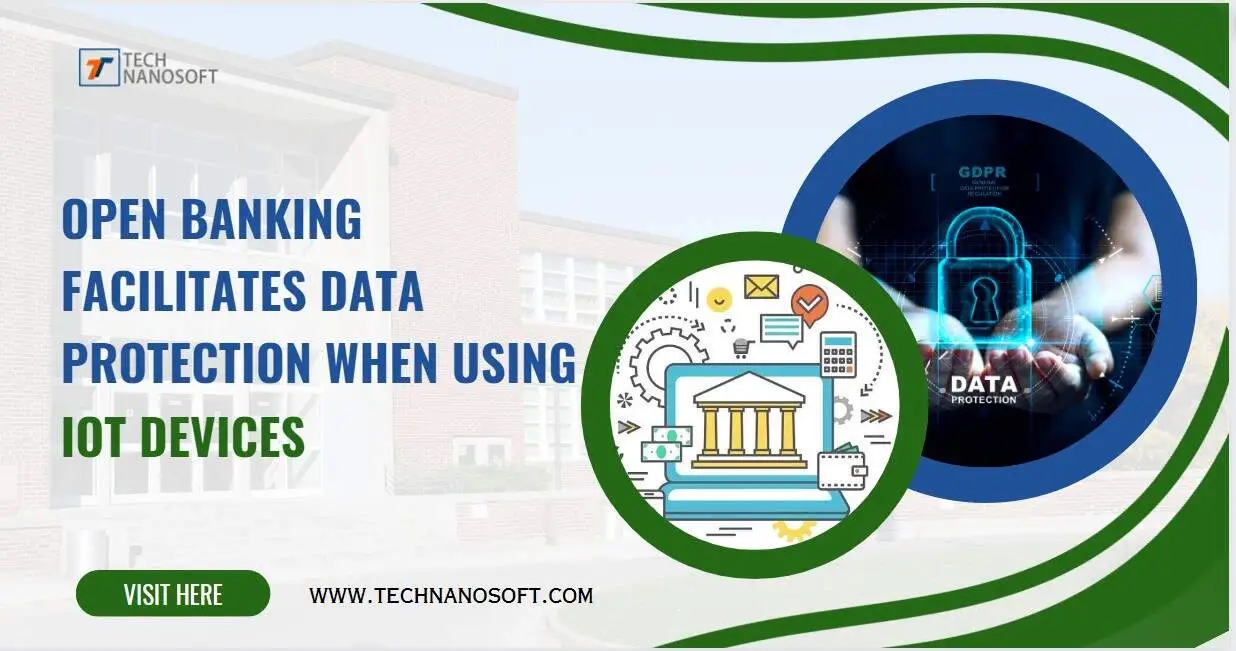Open Banking Facilitates: Data Protection Through IoT Devices

The financial sector is increasingly utilising devices and sensors. This technology helps them gain insights into customer behaviours, monitor assets, and automate processes.
The benefits of IoT in banking & Financial services are many, but they come with risks. Hackers can quickly gain access to any device connected to the internet. The sensitive information stored on these devices must be protected at all costs.
Open Banking allows companies that use IoT devices to protect customer data by making it accessible only to authorised parties. It increases trust among users and reduces liability for banks.
IoT Technology has transformed our lives. Iot sensors, iot applications, and the Internet of Things in Banking have begun to change our lives significantly. The benefits of IoT in banking are immense and will continue to grow as more people adapt to this new technology.
IoT devices enable financial institutions to gather data from different sources. This information can use to make more informed decisions regarding their clients' needs. They can also reduce costs by automating, streamlining processes, and stopping manual errors.
Businesses today face the common threat of hacking or data theft. If not prevented in time, it can result in severe financial losses. It is why companies need to take security measures when dealing with their client's information through IoT devices by:
-
Encrypting data at rest (i.e., on hard drives) and in transit (i.e., over the network).
-
Using strong passwords with different combinations of letters/numbers/symbols and two-factor authentication wherever possible."
-
It allows your company to easily integrate with other systems, such as third-party applications or websites like Facebook or Twitter. It means that once an application has been integrated with OBS, it can be used by multiple other companies without conversion!
-
Standardising how companies share information reduces the chance of human error or mistakes. It is more effective than having no standards at all.
-
This system offers increased privacy protection. No one outside your company can view your files without permission from someone within your organisation.
What is IoT?
Several connected devices can be accessed remotely and controlled by anyone with an internet connection. If you own an intelligent television or thermostat, you know how these products work. Connect your devices to your Home Wi-Fi network. Then, use an app on your phone or computer that will allow you to control them from anywhere in the world.
This system's interconnectivity has allowed hackers to exploit our personal data and financial information. As more people use the internet of things (IoT) to secure their environments, the number of security threats will rise drastically. It is essential to understand the steps of Google and other companies to create solutions to combat these issues before they arise. They are actively working to ensure their solutions can use in the future.
What is Open Banking?
Open banking is a way to access your financial data and can be done through an app or online platform. It helps you to manage your finances more efficiently. It also makes it easier for customers with different accounts with multiple banks to monitor all accounts through one platform. It would take too much time for most people today, especially if they have busy schedules!
Many companies already use open banking, like Mint and ING's Orange Money, a banking app allowing you to link your accounts. It provides a convenient way to view all your financial information in one place. But some barriers still prevent people from taking full advantage of it. That's why the UK government is trying to remove those barriers by passing legislation called PSD2 (Payment Services Directive 2).
The term "open banking" was coined in 2018 in the UK. It was when the Competition and Markets Authority (CMA) released its final report about competition in the retail banking industry. "Open Banking" was a key recommendation in this report. It called for banks to give their customers access to their data and the freedom to share it with third parties.
Open banking allows third parties access to your bank account to offer you new services beyond what your bank already provides you. For example, suppose you're looking for a loan or credit card. Open banking gives fintechs such as Lending Home access to bank account information. It enables them to calculate how much money they should lend an individual. Lending Home uses income, not credit score, to decide loan amounts.
How Open Bank Accounts Kept Safe?
Open bank accounts are kept secure achieved by using IoT devices, sensors, and applications. Security measures are employed to protect these items.
Open Bank Accounts and Security
An open bank account does not require an ATM card or any other physical device; it uses a username and password for authentication. These accounts are generally less secure than closed ones because anyone who knows your credentials can access your money. They don't need access to your money to use it against you, but they can use your username and password. It can put you or anyone with whom you share a financial situation, such as paying a bill, at risk.
These protections include the following:
-
Encryption: Encrypting the data sent between the device and the bank account allows for data security in transit.
-
Authentication: The authentication process occurs when users log into their accounts using their usernames and password. This process ensures that only authorised users can access their accounts.
-
Permission: Users must be authorised to access their accounts. Limits are set on how much money or how many transactions they can make within a certain period. Additionally, you can set limits on specific days of the week.









